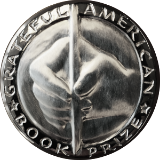January 16 — January 31, 2024
History Matters
Showing our children that their past is prelude to their future
by John Grimaldi and David Bruce Smith
America’s first gasoline powered automobile appeared in 1893. Sixty years later, the Chevrolet Corvette ambushed the market with a sports car that snatched a devoted following of ten thousand buyers annually.
According to History.com, “in the early 1950s, Harley Earl (1893-1969), the influential head designer for GM, then the world’s largest automaker, became interested in developing a two-seat sports car. At the time, European automakers dominated the sports car market. Following the debut of the Corvette prototype at the Motorama show in January 1953, the first production Corvette was completed at a Flint, Michigan plant on June 30, 1953. The car featured an all-fiberglass body, a white exterior and red interior, a relatively unremarkable 150-horsepower engine and a starting price tag of around $3,500 (not including taxes or an optional AM radio and heater).”
For more information, the Grateful American Book Prize recommends books such as The Complete Book of Corvette by Mike Mueller.

1953 Chevrolet Corvette
Although California didn’t become a state until 1850, it was a territory in 1848 – just in time for America to benefit from the discovery of gold on January 24, 1848 in Sutter’s Creek, CA.
“A tributary to the South Fork of the American River east of the Sacramento Valley and San Francisco, Sutter’s Creek was named for a Swiss immigrant who came to Mexican California in 1839,” reports History.com. “John Augustus Sutter became a citizen of Mexico and won a grant of nearly 50,000 acres in the lush Sacramento Valley, where he hoped to create a thriving colony … Sutter hired the millwright James Marshall to build a sawmill along the South Fork of the American River in January 1848. In order to redirect the flow of water to the mill’s waterwheel, Marshall supervised the excavation of a shallow millrace … Marshall was looking over the freshly cut millrace when a sparkle of light in the dark earth caught his eye. Looking more closely, Marshall found that much of the millrace was speckled with what appeared to be small flakes of gold, and he rushed to tell Sutter. After an assayer confirmed that the flakes were indeed gold, Sutter quietly set about gathering up as much of the gold as he could, hoping to keep the discovery a secret. However, word soon leaked out and, within months, the largest gold rush in the world had begun.”
The Grateful American Book Prize recommends The Age of Gold: The California Gold Rush and the New American Dream by H.W. Brands.

The California Gold Rush
On January 31, 1865, the 13th Amendment– ratified by the House of Representatives—stated “Neither slavery nor involuntary servitude … shall exist within the United States, or any place subject to their jurisdiction.”
According to History.com, “when the Civil War began, President Abraham Lincoln’s professed goal was the restoration of the Union. But early in the war, the Union began keeping escaped enslaved people rather than returning them to their owners, so slavery essentially ended wherever the Union army was victorious. In September 1862, Lincoln issued the Emancipation Proclamation, freeing all enslaved people in areas that were still in rebellion against the Union. This measure opened the issue of what to do about slavery in border states that had not seceded or in areas that had been captured by the Union before the proclamation.”
The Grateful American Book Prize endorses Slavery and the Making of America by James Oliver Horton and Lois E. Horton.

Engraving of the 13th Amendment
History Matters is a biweekly feature courtesy of The Grateful American Book Prize.




